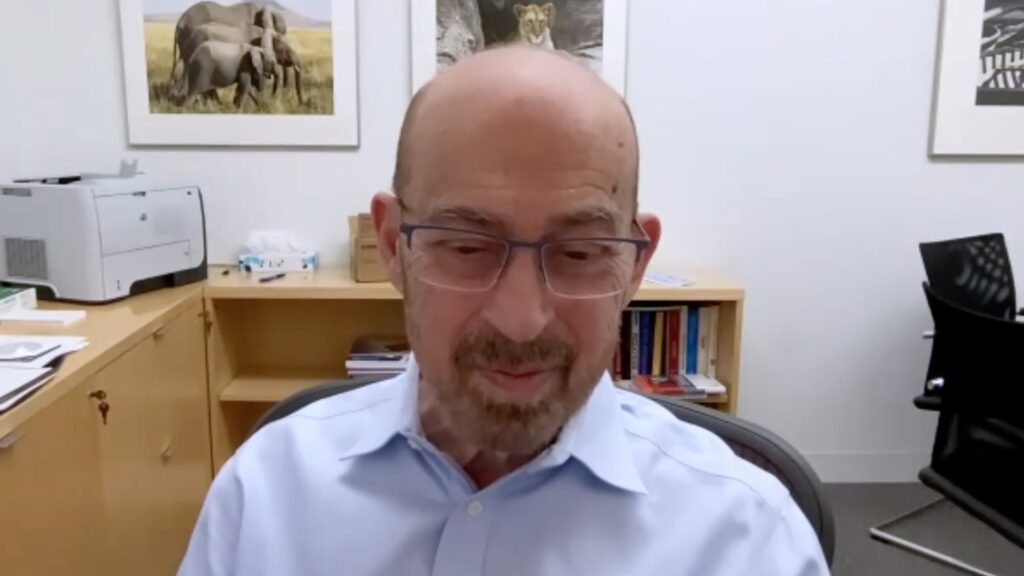touchCARDIO coverage of new guidelines for acute coronary syndromes presented at ACC 2025
In this timely interview, we speak with Professor Sunil Rao, NYU Grossman School of Medicine and NYU Langone Health System, New York, NY, USA, to discuss the driving forces behind the much-anticipated 2025 updates to the guidelines for the management of acute coronary syndromes (ACS) presented at ACC.25, Chicago, IL, USA, 29-31 March 2025. With the last iteration released in 2013, over a decade of new research and clinical advancements prompted a comprehensive re-evaluation of best practices. These updated guidelines unify recommendations for both ST-segment elevation myocardial infarction (STEMI) and non-STEMI, reflecting an integrated, evidence-based approach to treating patients with ACS. Professor Rao walks us through key updates—from antiplatelet therapy to mechanical circulatory support—while also addressing existing evidence gaps and the promising directions future research is headed.
Full transcript of the video is available below.
The guidelines in full:
- Rao SV, O’Donoghue ML, Ruel M, et al. 2025 ACC/AHA/ACEP/NAEMSP/SCAI Guideline for the Management of Patients With Acute Coronary Syndromes: A Report of the American College of Cardiology/American Heart Association Joint Committee on Clinical Practice Guidelines. Circulation. 2025;151. DOI: 10.1161/CIR.000000000000130.
Disclosures: Sunil Rao has no financial or non-financial relationships or activities to declare in relation to this content.
This content has been developed independently by Touch Medical Media for touchCARDIO and is not affiliated with ACC. Unapproved products or unapproved uses of approved products may be discussed by the faculty; these situations may reflect the approval status in one or more jurisdictions. No endorsement of unapproved products or unapproved uses is either made or implied by mention of these products or uses by Touch Medical Media or any sponsor. Views expressed are the speaker’s own and do not necessarily reflect the views of Touch Medical Media.
Interviewer/Editor: Heather Hall
Cite: Rao S. 2025 Updates to the Guidelines for the Management of Acute Coronary Syndromes. touchCARDIO, 8 April 2025.
Click here for more content on cardiovascular disease and for further ACC 2025 highlights visit here.
Transcript
I’m Sunil Rao, I’m Professor of Medicine here at NYU Grossman School of Medicine and Director of Interventional Cardiology for the NYU Langone Health System in New York City.
What brought about the 2025 updates to the guidelines for the management of acute coronary syndromes, and what do they seek to update and replace?
So the last set of guidelines for the management of acute coronary syndrome was in 2013, so we’ve really had 12 years of multiple randomized trials, and the field really has moved on and has evolved quite a bit. So now really was the time to update those guideline recommendations with the latest evidence. And what’s unique about this set of guidelines is that we combined both non-ST segment elevation MI and ST segment elevation MI recommendations into the same document.
The only thing I would emphasize is that the author group is multidisciplinary. We had experts from all different areas of cardiology, including cardiac surgery; we even had a patient representative on the writing committee. And I think it’s also important that people realize that we had several professional societies that partnered with us on this.
So this is really a a document that incorporates the entire community of cardiology.
In brief, what do the updated guidelines cover and amend, and what do these changes mean for clinical practice?
The guidelines really are very, very comprehensive, and we look at recommendations at each point in the patient’s journey through the hospital, from the time they present to the emergency department and a little bit even pre-hospital, all the way through their cath lab visit if they’re a candidate for invasive risk stratification, and through discharge. So at each point along the way, there has been a tremendous evolution in the evidence base for how we treat patients. Some of the recommendations are legacy recommendations, for example, around dual antiplatelet therapy at the time of hospital admission, the newer agents get a class one recommendation over clopidogrel. If the patient’s not a candidate for the newer agents, then clopidogrel plus aspirin gets a class one recommendation.
There are new recommendations around how to dose and use antiplatelet therapy and antithrombin therapy in the setting of fibrinolysis for ST segment elevation MI, how to deal with non-culprit disease in the patient with STEMI and non-STEMI, how to deal with shock patients, and how to use mechanical circulatory support, as well as discharge therapies for anti-lipid therapy and risk factor modification, for example, goals around lipid lowering for each patient. So these are really, really important recommendations, and I really encourage everyone to read these recommendations because they’re quite a bit different from the previous iteration of the guidelines.
What are the main evidence gaps and the future directions for management of ACS?
There are still quite a few evidence gaps, and I think that’s why the evidence base continues to increase. So, for example, one of the areas that I think we need more evidence in is, you know, what is the role of single antiplatelet therapy in a patient who is remote from their acute coronary syndrome? Along the same lines, when does that acute coronary syndrome patient become a chronic coronary disease patient? We really don’t know when that transition happened. In fact, it may be very individualized for each patient.
We also need to understand the role of different and newer mechanical circulatory support devices in patients with cardiogenic shock. There are lots of trials that are going on right now. There are new antiplatelet therapy agents that are being studied. What is the role of some of these agents in the prehospital setting? So can that reduce the risk, for example? And then, of course, there are always new paradigms that are coming down the road. So for example, Factor XI now is a target for drugs. So what is the role of Factor XI inhibition? Several large phase III trials are ongoing, for example.
And then now there are new agents that are targeting inflammation, which is a brand new target for us. We know that in some settings, the use of anti-inflammatory drugs is very, very beneficial, but now we need to study them in the acute coronary syndrome setting.
So I have no doubt that these guidelines are gonna be updated again in a few years, and I suspect there’s gonna be a lot more new evidence that’s incorporated in that new guideline. I do wanna point out though that although the field is moving very, very rapidly and there are new exciting things that are coming around, what’s incumbent, I think, on all practitioners is to take the evidence that we have now and implement it at the bedside. Really, there’s a gap there in the implementation of these evidence-based therapies, and, really, we’re gonna have a huge impact just by implementing the current recommendations.











